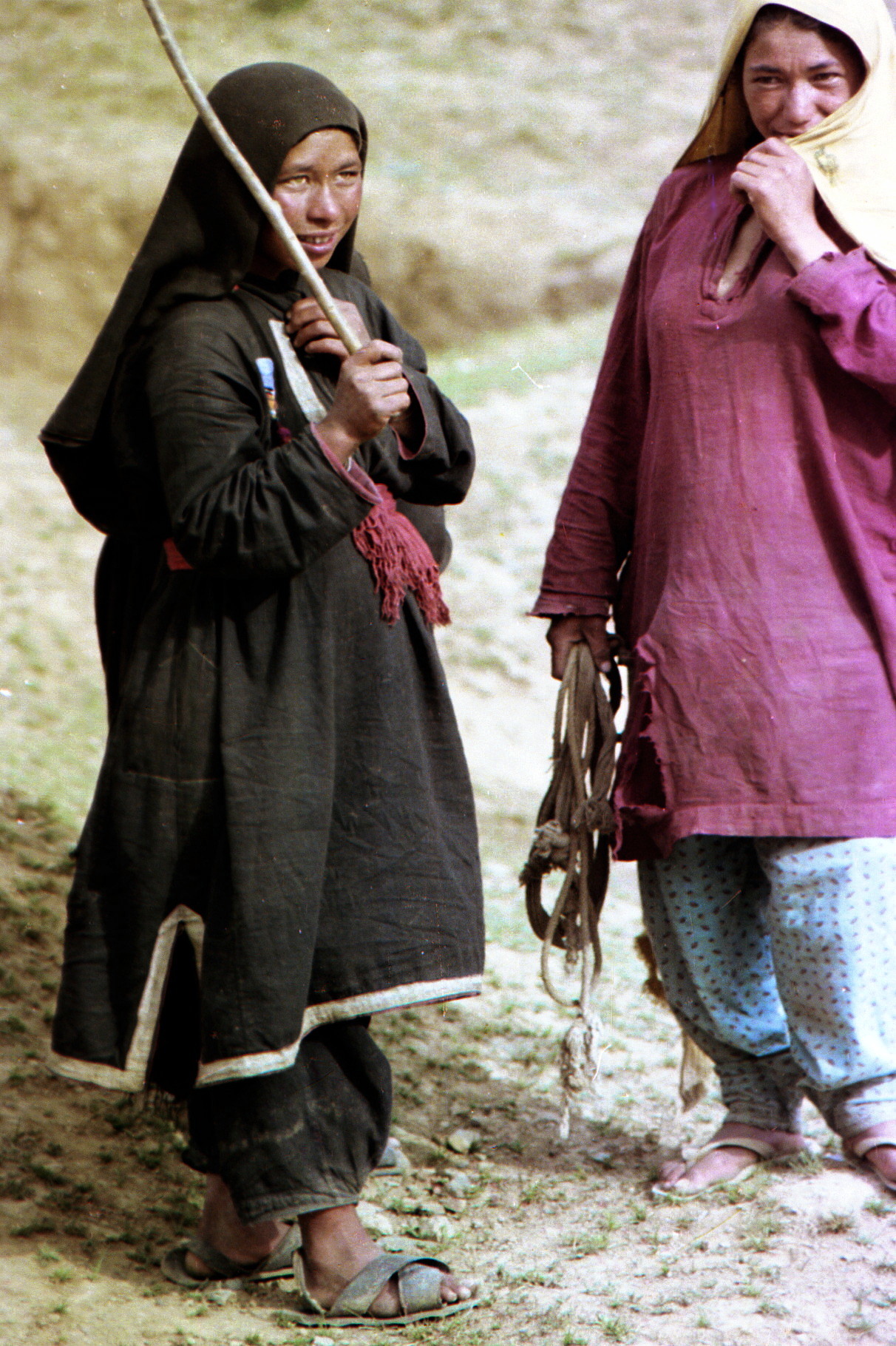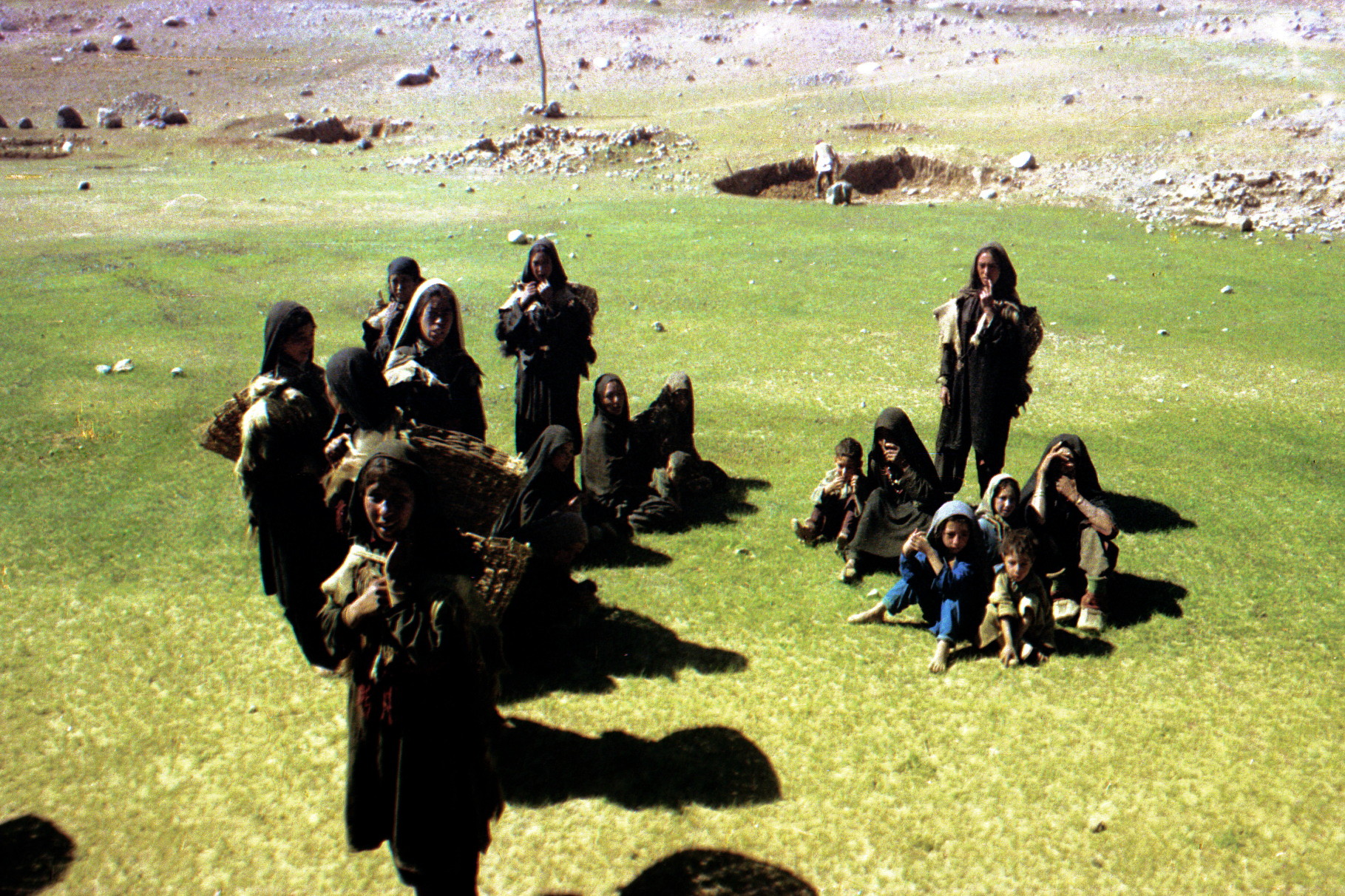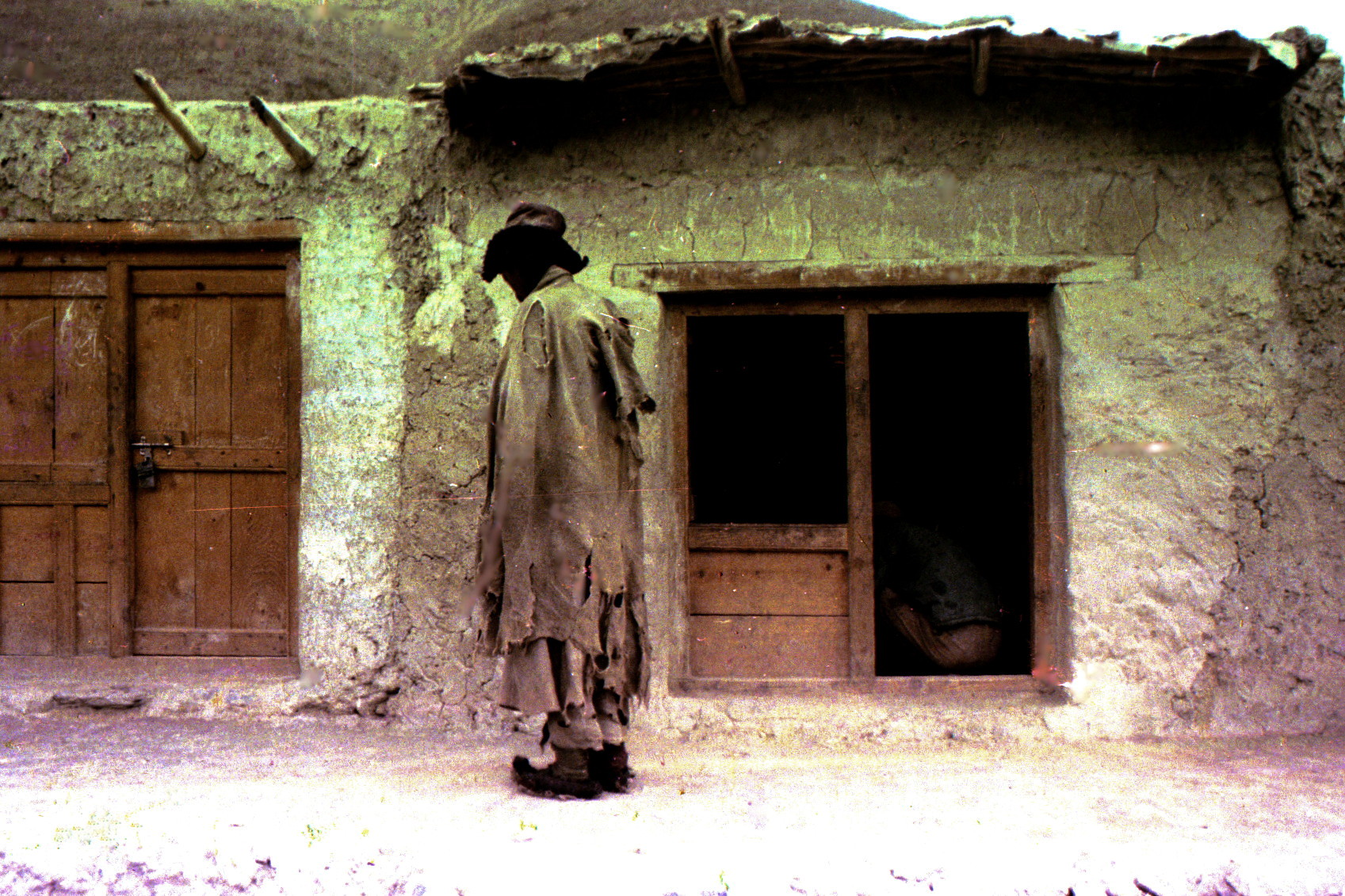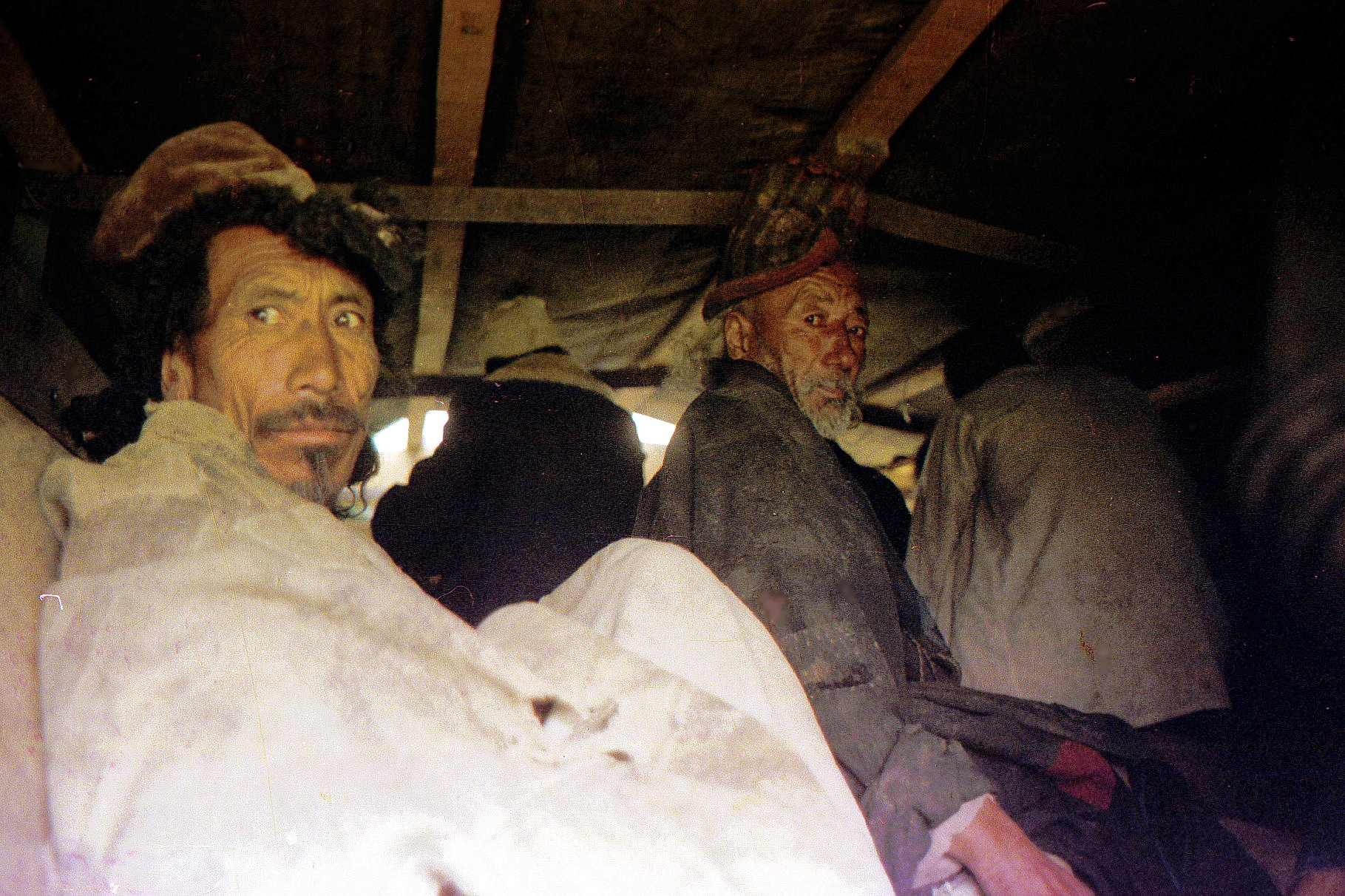
The place everyone wanted to visit in India was the Ladakh region in Jammu and Kashmir state, not far from Tibet. We entered India from Pakistan and headed north through Amritsar and Jammu and on to Srinagar.

We spent several days in Srinagar and then headed east hoping to get to the city of Leh in Ladakh.

It was monsoon season, so we had lots of wet weather. This on the road up to Jammu.

Another village on the way up to Jammu.

We spent a few days in houseboats on Lake Dal, Srinagar. It was lovely. An attendant cooked and served meals and vendors came by in boats selling all sorts of essentials. We all got horribly sick from the food.

Young kids making carpets in Srinagar. You need small fingers to do the work well.

We paddled around Lake Dal quite a bit. Parts of it are very urban and parts nice and rural.

Beautiful old wooden house on Lake Dal.

Robin, one of our drivers, and I out on a canoe.

Lake Dal, Srinagar

Farmers use these large counter-balanced ceramic jars to lift water out of the lake and into canals leading to their farmland.

Kingfisher

Touring Lake Dal.

Houseboat interior, Lake Dal. That's Michael, a Canadian. The interior of the boats was quite elegant and a welcome change from our two-person tents.

Houseboat dining area.

After a few days in Srinagar, we headed east toward Ladakh.

When we arrived in the Sonamarg Valley, we found that the road was closed due to artillery exchanges between Indian and Pakistani forces. This area is disputed by the two countries and road closures are frequent. In any event, the road is only open during a few summer months because of heavy snow.
Plenty of travelers were stuck here with us. Note the radiator bolted to the front of our truck. It had been overheating and this was added in an attempt to keep it cool. Within a few days the truck's main bearings disintegrated and we were stuck for ten days.

Sonamarg turned out to be an interesting place to visit.

The houses all had flat roofs, in spite of the heavy winter snowfall.

Lots of stone walls.

This is a water powered grain mill. The kernels are in the basket and trickle down into the hole in the grindstone which is two disks. As the grain is ground down, the distance between the disks becomes less which allows more grain to trickle down. So clever.

Stone house - Sonamarg Valley

Sonamarg Valley

Sonamarg Valley

Sonamarg Valley

Sonamarg Valley

Sonamarg Valley - The now-indigenous people of this area probably are of Indo-Aryan and Tibetan descent.

The truck finally broke down east of Dras in a pleasant enough valley with three small villages. Needless to say, it wasn't very cold in July. The drivers determined that the main bearnings had failed. Of course, no repair shops near by, so one driver called the head office in London and asked for main bearnings to be shipped to Delhi. He then traveled back and forth to Delhi to fetch the bearings. This and the subsequent repair took about ten days. We managed to replace the main bearings without pulling the engine. It wasn't easy.

The people here were quite different from those in Sonamarg. They herded yaks and grew some barley, I think.

Not a lot going on.

When it became clear that we were stuck in Dras, a group of us decided to try to hitchike to Leh. We made it to the next large town, Kargil, where we stayed in a rather crummy hotel.

On the way to Leh

We got a ride in the back of a truck that contained huge sacks of animal feed, a goat and a few local people.

When we stopped for lunch, these guys lit a small stove, butchered a chicken they had brought along and boiled it.
| Introduction | England | Scotland | Europe |
| Turkey | Iran | Afghanistan | Pakistan |
| India 1 | India 2 | Nepal | Burma |
| Thailand | Malaysia/Singapore | Indonesia 1 | Indonesia 2 |
| Hong Kong | Macau | Japan | Korea |
Photographs and text copyright Michael Newman and William Garsden: 2025